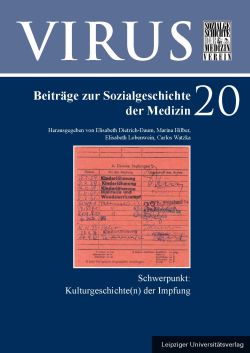
VIRUS Band 20, pp. 131-146, 2022/06/14
Schwerpunkt: Kulturgeschichte(n) der Impfung

The paper focuses on aspects of indirect compulsion in the context of vaccination against smallpox. The area of interest is Tyrol in the 19th century. Starting with the difference between the Western part under the Bavarian regency with compulsory vaccination (until 1814) and the rest of the Austrian monarchy with a voluntary vaccination, we see an increasing enforcement of restraint during the 19th century by contemporary avoiding the introduction of a compulsory vaccination. To increase the number of voluntary vaccination the government tied different social benefits to the certificate of vaccination – with moderate success. Therefore, the demand for an intensification of the compulsion came both from the medical practitioners and from the local authorities.
Keywords: Vaccination, Smallpox, Tyrol, 19th Century, Compulsion, Social Benefits, Certificate of Vaccination, Archival Records, Remonstrance